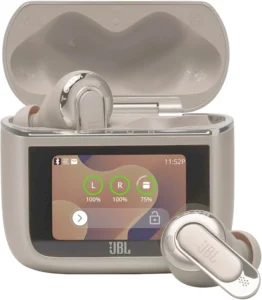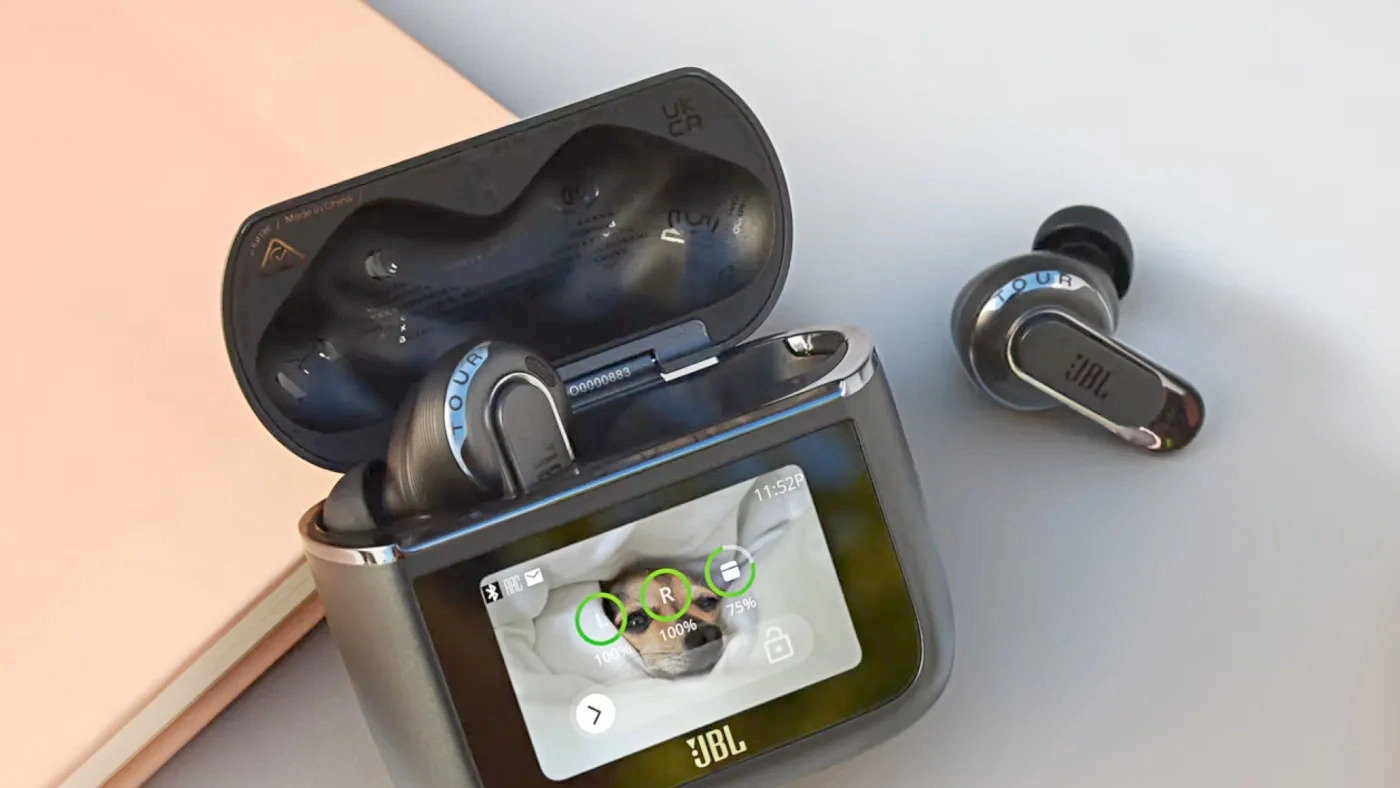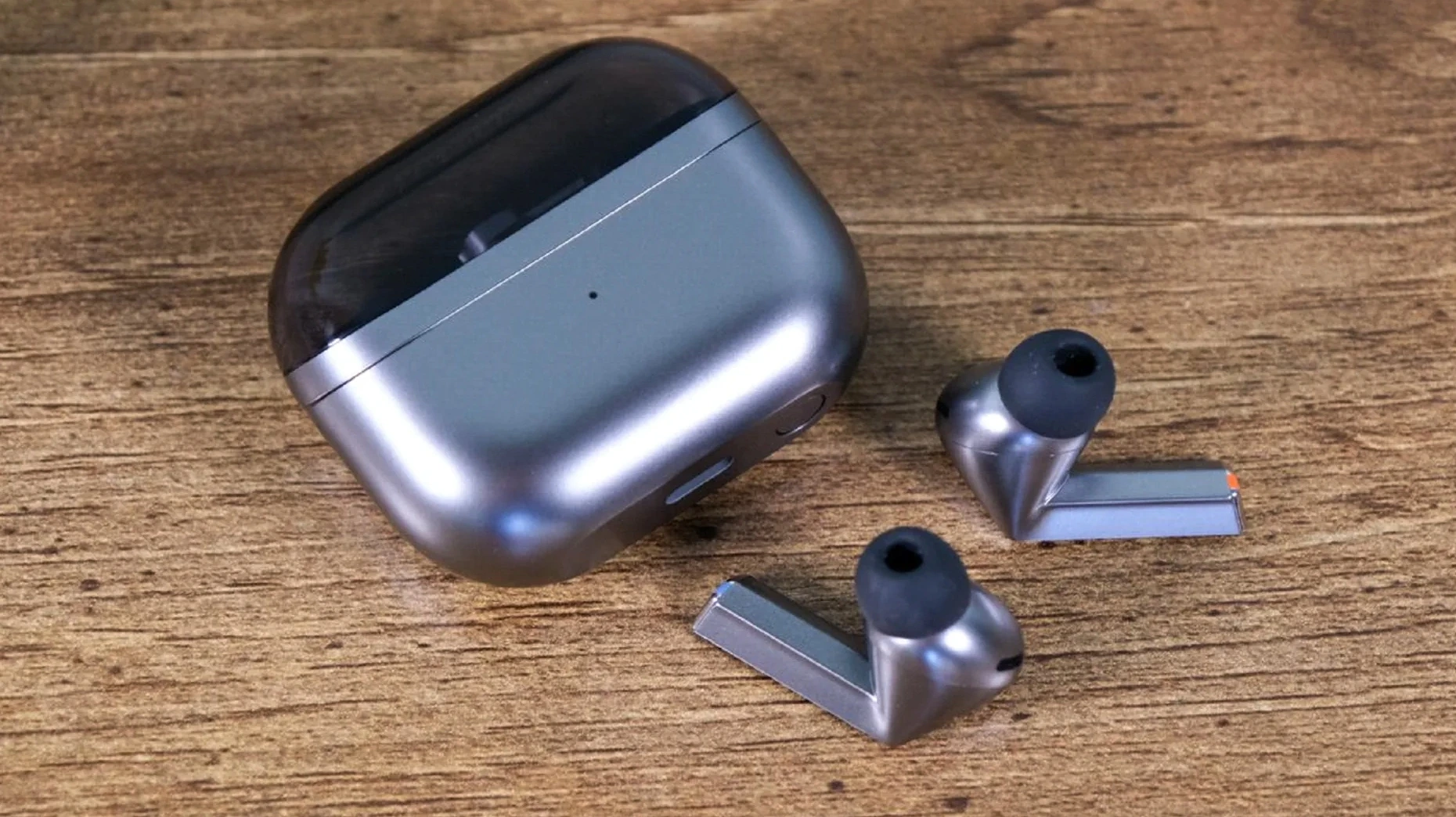I have been testing the JBL Tour Pro 3, the new top-of-the-range headphones from JBL, for two weeks, and this was my experience: their screen is very striking, although the best thing is their autonomy and the infinite number of functions to personalise them. They are not lacking in some buts.
I’m sure Samsung isn’t the first headphone brand that comes to mind if I tell you to think of one, but what about JBL?
The brand, owned by Samsung and managed by its Harman division (which is also a popular sound brand), is better known and has a long history of experience.
JBL is known for its wide range of headphones in all price ranges, from the most affordable to the most complete and expensive models, with which it competes in a market that is also experiencing a good momentum. Wireless headphones grew by 12.6% in sales in the second quarter of 2024 according to Canalys data, well above other products such as mobiles and computers.
To take advantage of this good trend, in mid-September the company launched in Spain its most complete model of wireless headphones with a screen in the charging case, the JBL Tour Pro 3, which I have had the opportunity to test over the last two weeks.
All about the screen: is it really useful?

The JBL Tour Pro 3 repeats the format of the model from a year and a half ago that was already seen in the JBL Tour Pro 2 and once again has a charging case with a colour touchscreen that can be used to carry out various functions.
The 1.45-inch panel is quite a surprise when you first see it, although as time goes by you will see how useful it is and you will use it more and more. However, I can tell you that I personally am not entirely convinced by it and I haven’t used it very much.
The lock screen is not only decorative but also useful: you can see the remaining battery on each headset and on the case, the time and the Bluetooth icon tells you if they are connected. The screen is activated if you click or open the case lid, and can be set to activate only after two clicks so you won’t accidentally turn it on when you reach into your bag or pocket.
If you unlock the home screen, this panel has a number of sliding views that make it easy to perform tasks that normally require you to reach for your smartphone:
You can resume playback, view the title and skip to the next track.
You can increase and decrease the volume.
Adjust the sound to the pad you are using.
Toggle between active noise cancellation, ambient sound and talk-through mode.
Connect to other devices via Bluetooth or Miracast.
Activate spatial or 360° sound.
Change the sound equalisation mode.
Use the case as a timer.
Adjust the brightness of the screen.
Choose the wallpaper for the case.
Set automatic detection when you speak or are spoken to, known as Voiceaware.
Auto play and pause.
Activate SilentNow, which turns off notifications for 30 minutes.
Control whether you can receive notifications from your phone on the case and what content is displayed.
Control the time format.
Activate the torch: the screen goes blank and at maximum brightness, which can get you out of trouble but is not comparable to the flash on your phone.
Find my headphones function.
Change the language of the case.
My reservations with the case’s screen have to do with the fact that it is really just another screen, which does not replace the need to carry the mobile phone with you because you need it to stay connected – otherwise it would be an MP3 player.
In addition, it includes functions that I found redundant and unnecessary, such as the option to display mobile notifications not related to the headphones: why would I have to look at them on such a small screen when the mobile phone is only a few metres away -the maximum that Bluetooth allows-?
I’m not convinced either by the quality of the image or the precision of the touch control of the JBL Tour Pro 3’s screen, which in my experience was far below what I’m used to in current mobiles and smartwatches.

Design: they are obviously premium, but I found the case to be large and they are not the most comfortable headphones.
In terms of design, I think the JBLs are a step below other wireless headphones in the same price range, both in terms of the headphones themselves and the case.
Including a screen and a small operating system is something that penalises JBL in the design of the case, which is much larger and heavier than most high-end headphones these days. JBL doesn’t disclose the dimensions of the case, but I can tell you that it is thicker than two mobile phones put together, and this seems to me to be its biggest problem.
It weighs 83 grams with the headphones inside, so it’s not exactly a lightweight case either. As much of a screen as they have, I’d expect better from a 300 euro headset like the JBL Tour Pro 3.
The design of the headphones is a slight improvement over the case.
I think JBL is right to choose a stick format that for once doesn’t look like a replica of Apple’s AirPods, especially in the latte-coloured version I tested. Its beige tone with different materials gives it an elegant and modern touch at the same time.
The best thing is without a doubt the great stability of the earphones once they’re on, so they’re perfect for sports. I’ve had no problems using them at the gym, and I’ve never dropped them. They are also IP55 certified against splashes and dust.
But there are downsides. In my case, the shape of the headphones has caused me some discomfort after prolonged periods of use of several hours. Despite being wand headphones, they are similar in shape to in-ear headphones at the top and are quite large, so the weight rests on the ear.
Sound: Noise cancellation and sound stand out from the rest in terms of versatility.
In terms of sound, JBL uses its extensive experience to ensure that both audio quality and noise cancellation are among the best you can find at the moment.
The sound achieves a great result when you listen to music, with deep bass that is a testament to the 10.2 millimetre dynamic driver, which isn’t the largest on the market, but is complemented by a balanced 5.1 x 2.8 mm driver driver that also excels in dialogue and treble.
But it’s not just the quality, where there are other high-end models that are on a par with or even ahead of them, it’s the high variety of sound features that makes the JBL Tour Pro 3 one of the most comprehensive headphones you can buy in 2024:
LDAC. You can set this high-resolution audio mode via the JBL app. I recommend it because all sound becomes clearer, but be aware that it increases power consumption, requires you to turn off and restart the headset every time you turn it on or off, and is not compatible with some of the other features.
Spatial sound. This mode, found only on high-end headphones like the latest AirPods Pro, goes a step beyond stereo and creates a universe of sound around you, as if the band you’re listening to is surrounding you.
Headtracker, or head movement. I’ve loved using this mode to watch movies or just listen to music and notice how the sound environment changes if you move your head. JBL does a really good job because the sounds really seem to come from behind you, like in those 8D songs that became popular several years ago.
LDAC. You can set this high-resolution audio mode via the JBL app. I recommend it because all sound becomes clearer, but be aware that it increases power consumption, requires you to turn off and restart the headset every time you turn it on or off, and is not compatible with some of the other features.
Spatial sound. This mode, found only on high-end headphones like the latest AirPods Pro, goes a step beyond stereo and creates a universe of sound around you, as if the band you’re listening to is surrounding you.
Headtracker, or head movement. I’ve loved using this mode to watch movies or just listen to music and notice how the sound environment changes if you move your head. JBL does a really good job because the sounds really seem to come from behind you, like in those 8D songs that became popular several years ago.
Noise cancellation is another strong point of the JBL Tour Pro 3, both in terms of quality and variety.

Their active noise cancellation is quite good at detecting the noise around you and acting to reduce it. It works very well with traffic when you’re walking down the street, but not so well when the noise around you is other people’s voices. While it performs well, I have to admit that there are some models that outperform JBL ANCs from brands like Huawei, Sony and Google.
As usual, you can activate the ambient aware, or transparent, mode, which allows you to hear what’s going on around you and be aware if something needs your attention, rather than being secluded as with the ANC. It serves its purpose, but I didn’t find it particularly good compared to most, as all sound is muffled.
In addition, there is a third mode, talk-through, which is activated when you speak or are spoken to directly. In this mode you can hear yourself and the other person quite well, but the playback stops automatically so that you can talk. While I would have liked to have had the quality of this mode in ambient aware, I did like it better with the personal sound amplification feature that can be activated in the app, so you don’t sound distant, but you do sound a bit robotic or canned.
The JBL Tour Pro 3 work perfectly on calls. In my experience, not only can you hear the other person well, but the 6 microphones, 3 per earpiece, allow you to be heard quite well. It also cancels external noises quite well: for example, I passed by a construction site while walking down the street and the person on the other end of the phone didn’t hear a sound at all.



